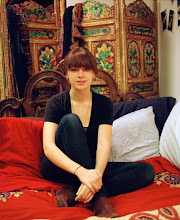
Inspired by Thomas L. Dumm's essay titled "Resignation" comes the traveling exhibition entitled "Damaged Romanticism: A Mirror of Modern Emotion" which cleverly comments on the pragmatism often considered to be alien to the Romantics of the 19th-century. This confrontation between the classic Romantics and contemporary realists is expressed through painting, sculpture, photography, film, and mixed media. It is interesting that the curators and artists chose to discuss and present emotion through the eyes of disappointment and resignation. This exhibition revolves around the simple thesis that profound, powerful, positive artwork comes from deep disappointment, achieved by placing contradictory sentiments, such as rebellion, disillusion, and defiance side by side. The artists who make up this exhibition do not belong to a style or school in the typical sense that we categorize art, but rather, the artists aim to uplift the spirits of the public during the current period. Similar to previous Romantics, these artists are impacted by the damage created by the forces of modernity and the escape from the natural world. Where these current artists differ is that they do not loose sight of hope, regardless of the circumstances. Undoubtedly, the works presented have strong roots in suffering, however, through tough-minded optimism, they reject resignation certain that the future promises to be better by learning and growing from the things that have gone awry. The beautiful aspect of this exhibit is that it provides aspects of all realms of life, allowing viewers to identify and gain hope themselves.
It is not uncommon for artists to capture emotion in their works, in fact, that is what art aims to do. However, it seems that this exhibition is more straight forward, brilliantly captivating the "plausible beginning, rather than a certain ending" in which Dumm so strongly casts in his essay. The continuous progression of modern art draws questions as to whether previous artists felt the need to accommodate the viewer's feelings seeing as art occurring in the present seems to be as outrageous and outspoken as possible, though not necessarily negative, as proved here. Throughout art history, just until the modern era erupted, the works created seem to be pleasant enough so that the viewer is not harmed, that is, they do not deliberately stir up controversial emotions. The aforethought dubious nature of art today often allows the conclusion that the astonished reaction from the viewers is the purpose of modern art. It is continuously discussed that art has come to a halt because artists have run out of new mediums and styles to produce work through. Because of that, are artists left to simply shock their audience? I hope not. That makes a mockery out of the talent many possess.


















